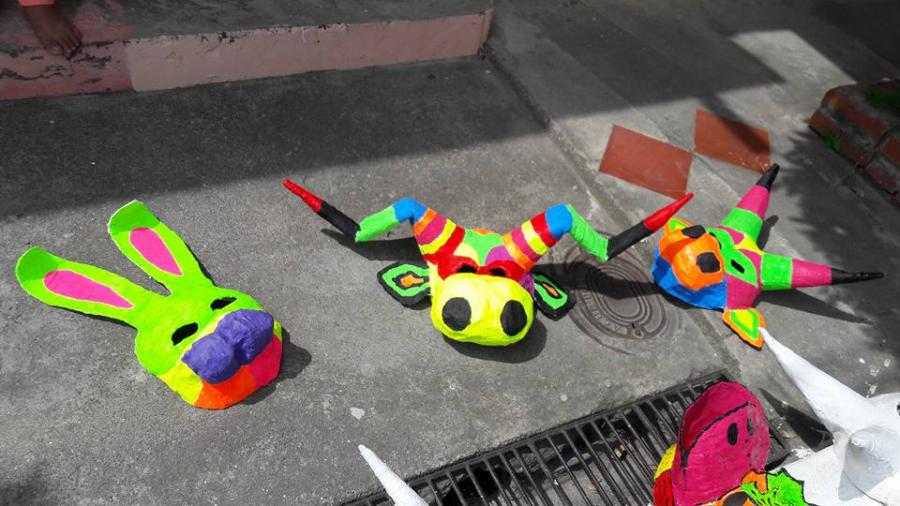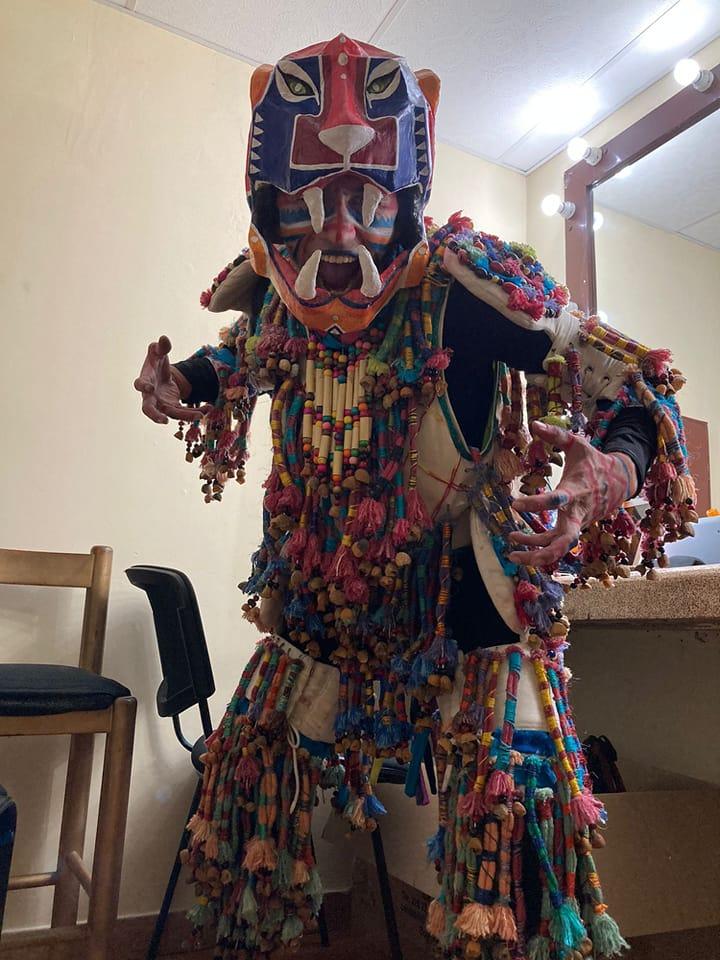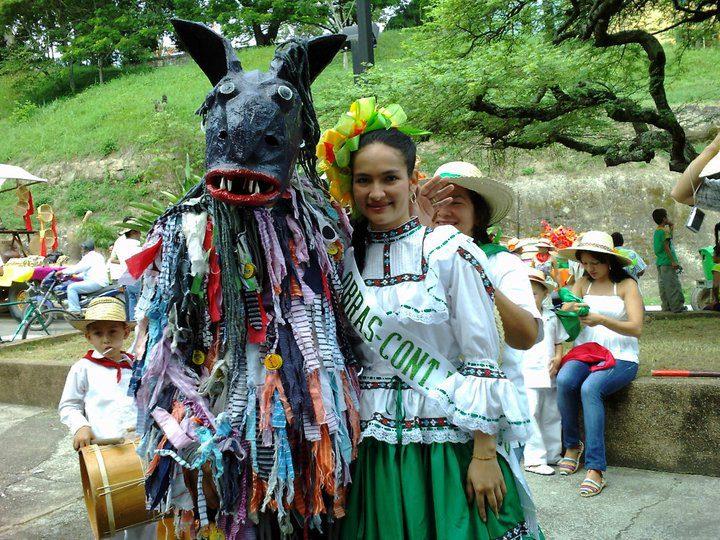The machetein their colorful outfits, made from scraps of multi-class fabrics and their zoomorphic masks created by artisans modern, were not in their origins as we see them today in each parade during the Celebration of the Colombian Folk Festival in Tolima, as can be seen in the festivities of the Corpus Christi in GuamoSan Juan in Natagaima or San Pedro in El Espinal.
Contrary to the joy that comes from the celebrations where the matachín participates today, its genesis goes back to the shamanic wisdom, the war strategies and the religious rituals of the Pijao indigenous people.
Narrates Nelson Martinez Criollo, Shaman of the Los Seborucos community in Chaparral, Tolima, that the healers of the ancient Pijao nation they wore masks made of gray clay during their healing rituals.
Among his knowledge preserved from the oral tradition, he states that the healers “they put on their masks and made piercing screams of healing” which in white culture are known as exorcisms, shamanism or spirituality.
The Pijao used fear as medicine.
For the pijaos, fear helped to scare away evil, that’s why, when the healer was performing the ritualinvoked the spirits who manifested themselves in strange beings that the patient mistook for demons and when they ran away the diseases that afflicted the sufferer were also frightened.
Those mythological manifestations were representations of community memberswho with their masks reinforced with bark like banana socks and painted with colors extracted from the achote, the dinde, the healer and the blooded, interpreted the terrifying scene of horror and healing.
Matachines as a war strategy
With the arrival of the Spaniards to the lands of the Otaima (Ortega), the Nataima (Natagaima) and the Coyaima, The Pijao had to face the European ambition and based on the camouflage of the iguana and the chameleon, they popularized the use of the suits known as the first matachines of Tolima among their practices.
Around that time, dating back to the end of the 16th and early 17th century, The Europeans encountered great resistance from the indigenous people of this region, who became invisible among the vegetation due to their suits of rags, mosses, plants, dry leaves, bark, vines, iracas and other natural elements; invention that continues to be used today by the military forces during their incursions into conflict zones where vegetation predominates.

Gildardo Aguirre, renowned Tolima folklorist, points out that the word “matachín” or “matacho” means “defense of” while Nelson Criollo explains it from the Pijao language as the translation of the phrase “they don’t kill me”.
In other cultures the term is related to the word “killer” which, in any case, keeps the etymological relationship with the use that was given to this practice as a combat strategy, a field in which the Pijaos were among the most ferocious and savage warriors.
The miscegenation of Christianity and indigenous rituals
Established in the lands of Tolima and faced with the difficulties of the priests to convert the natives to christianityThey made friendly invitations to the communities to participate in religious rituals in which they hoped to identify the shamans or mohanes who were at the time the caciques or leaders of the tribes.
However, the mistrust planted in the pijaos by the two hundred years of colonization history, led them to participate in these meetings using the outfits, with which it was impossible for the Spanish to identify the leaders, distinguish whether they were men or women or even know if the shaman was among the guests.
According to Gildardo Aguirre, “It was the same religiosity that did not allow the matachines to disappear” because in the exercise of acculturation, the same priests, to introduce them into Catholic rituals, adopted the matachines as a representation of good.
It should be noted that in Spanish traditions, characters similar to those of the matachín are the mojigangas or jarramplaswhich date back to religious festivities in whose representations, as in those of contemporary matachines, good is also imposed over evil.
The troupe of the matachines
Currently, the comparsa de los matachines integrates the devil and a virgin or a matachina woman, as protagonists of a game in which the devil tries by all means to catch her. The matachines intervene, sometimes protecting the matachina and other times locking up the devil. They run, jump, walk, do a rajaleña step accompanied by movements of the shoulders, arms and trunks.
The devil for his part does pantomimes, chase the virgintries to enter where she is, pretends to be fallen, runs, sits, rolls over and kicks after never being able to fulfill her mission.

The choreography in which figures typical of the indigenous dances of the sun, the moon, the partridge and the chicha appear, concludes with a barbecue made with the sticks of the matachines where the matachina sits on top like sign of the triumph of good that managed to defeat evil. All this happens in the presence of tourists who shout and enliven the comparsa, motivate the devil not to give up and scream in fear when he almost has the virgin in his hands.
Applause always accompanies the end of the presentationalthough deep down, everyone would like to know what purpose the devil has with the Virgin, because for centuries since she did this dance for the first time in some celebration south of Tolima, the devil has never managed to catch her.
Matachines from Tolima, demons and warriors of the Pijao culture

